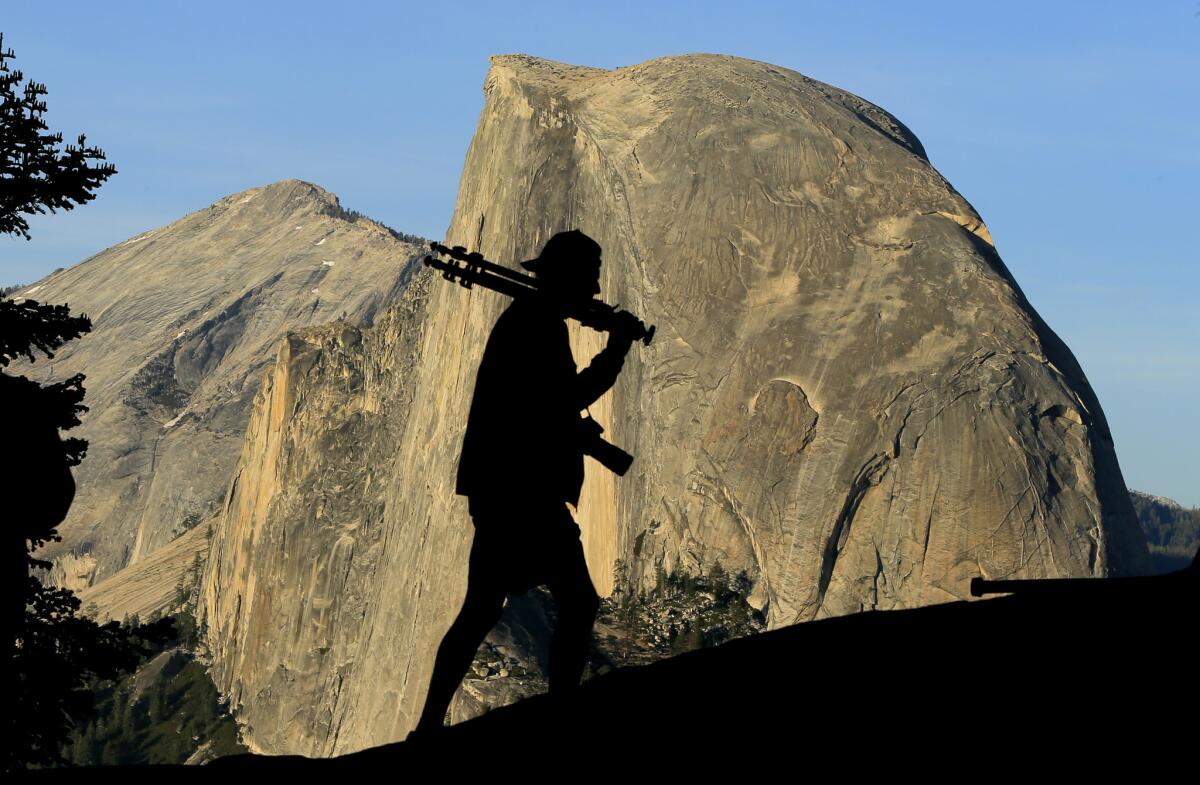Rock fall at Yosemite National Park could alter popular Half Dome climb

A photographer walks away with his tripod over his shoulder and Half Dome in the background at Glacier Point in May 2013. A massive sheet of rock has fallen from the vertical face of Half Dome, making one of the most popular routes attempted by climbers in North America even more challenging, park officials said Tuesday.
- Share via
A popular climbing route at Half Dome in the Yosemite National Park may have been altered after part of the iconic granite monolith’s face collapsed last week, officials said Tuesday.
Climbing rangers were assessing changes to the Regular Northwest Face climb after a triangle-shaped slab of rock, roughly 200 feet long and composed of relatively thin granite, tumbled off Half Dome, park geologist Greg Stock said.
While large, rock falls of this magnitude are relatively common at the park, Stock said, and occur about once a year in a process known as exfoliation. Water, ice, earthquakes and plant growth could trigger unpredictable falls.
“It wasn’t huge by rock fall standards,” park spokeswoman Jodi Bailey said.
In this case, roughly 800 cubic meters of rock was stripped from the steep sheer face of Half Dome during heavy rainstorms sometime late Thursday or early Friday, Bailey said. Park officials believe rain was the likely culprit.
No one witnessed the rock fall and no one was hurt, Bailey said.
The affected route, recognized in the classic climbing guide Fifty Classic Climbs Of North America, is open to rock climbers, she said.
According to the climbing guide Supertopo, the 2,000-foot-high climb has 23 pitches and takes about three days to complete.
In Supertopo’s online forum, climbers said the ledge near Robbins traverse was missing.
In 2014, there were 77 documented small rock falls, an increase from the average of 45 small rock falls per year. The largest rock fall occurred March 31 last year when 5,000 cubic meters fell from the north wall of the Hetch Hetchy Valley, burying the Rancheria Trail below.
For breaking news in California, follow @VeronicaRochaLA.
More to Read
Sign up for Essential California
The most important California stories and recommendations in your inbox every morning.
You may occasionally receive promotional content from the Los Angeles Times.













